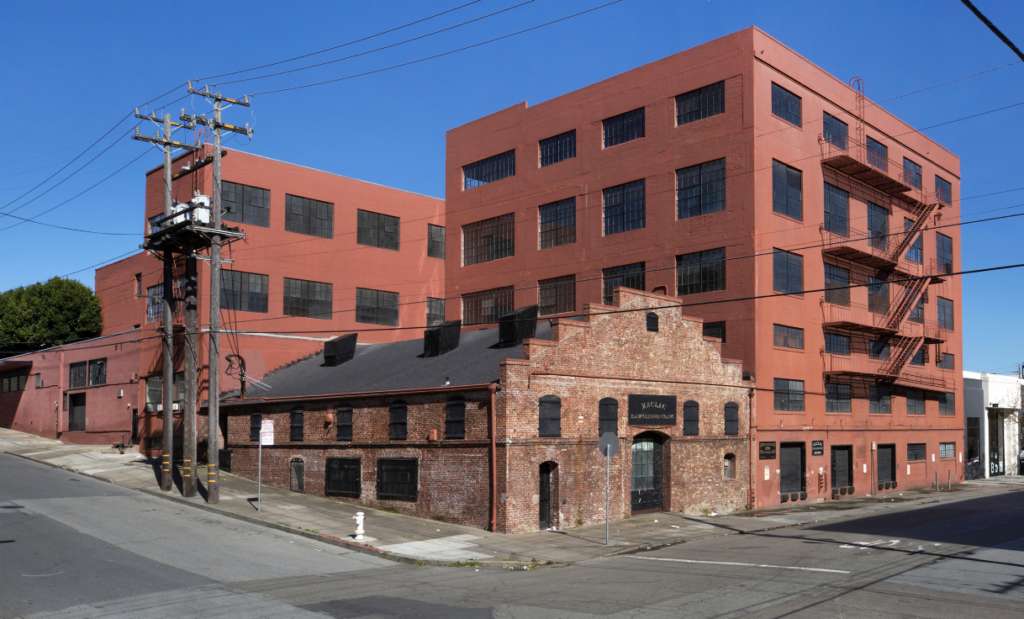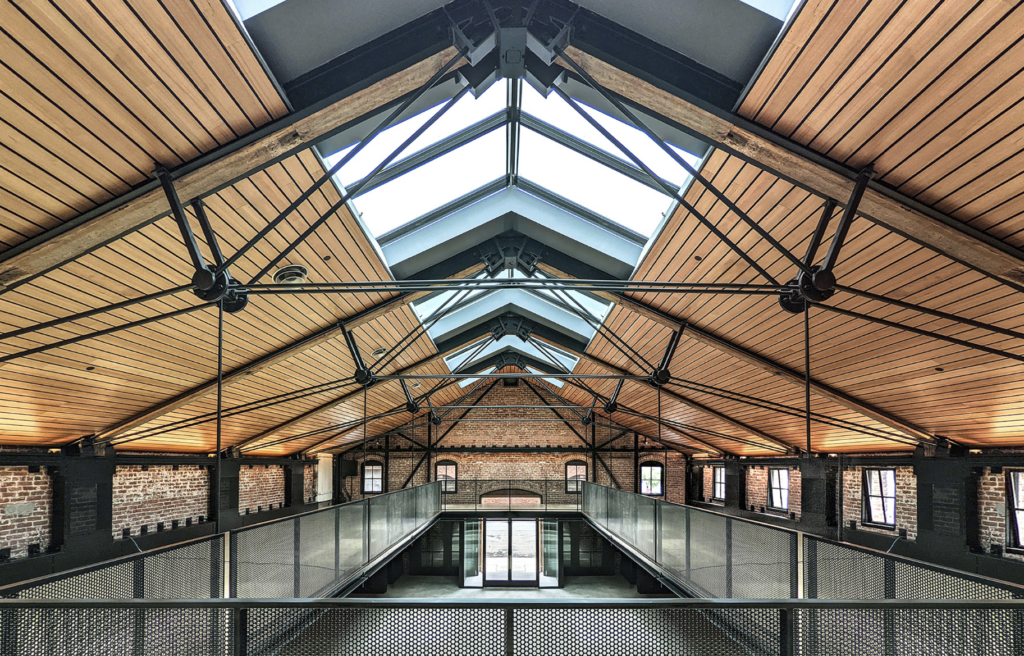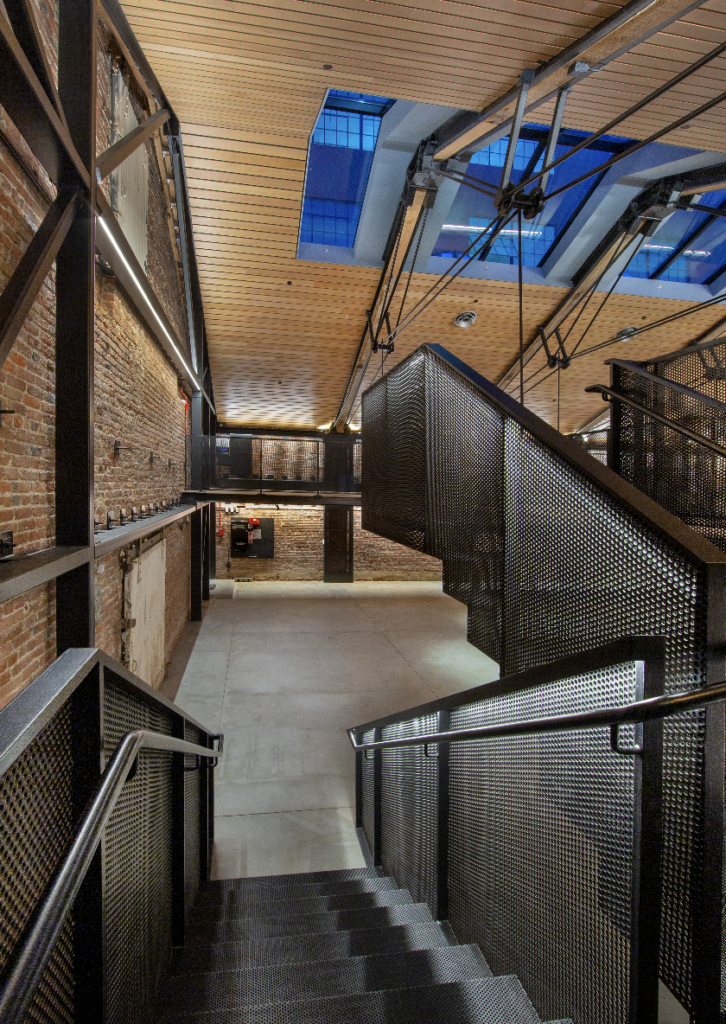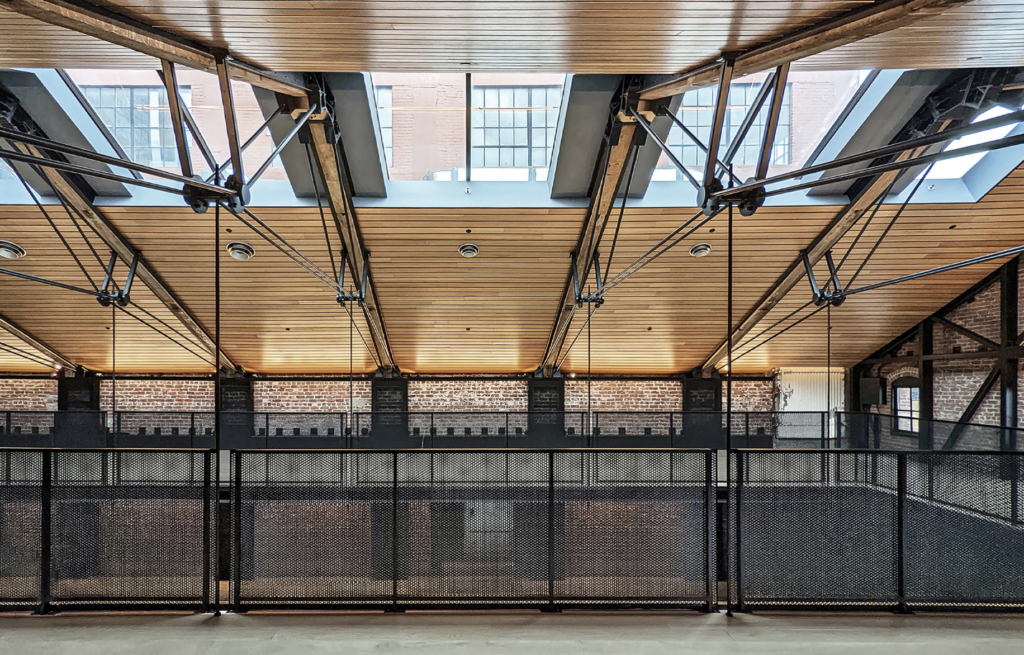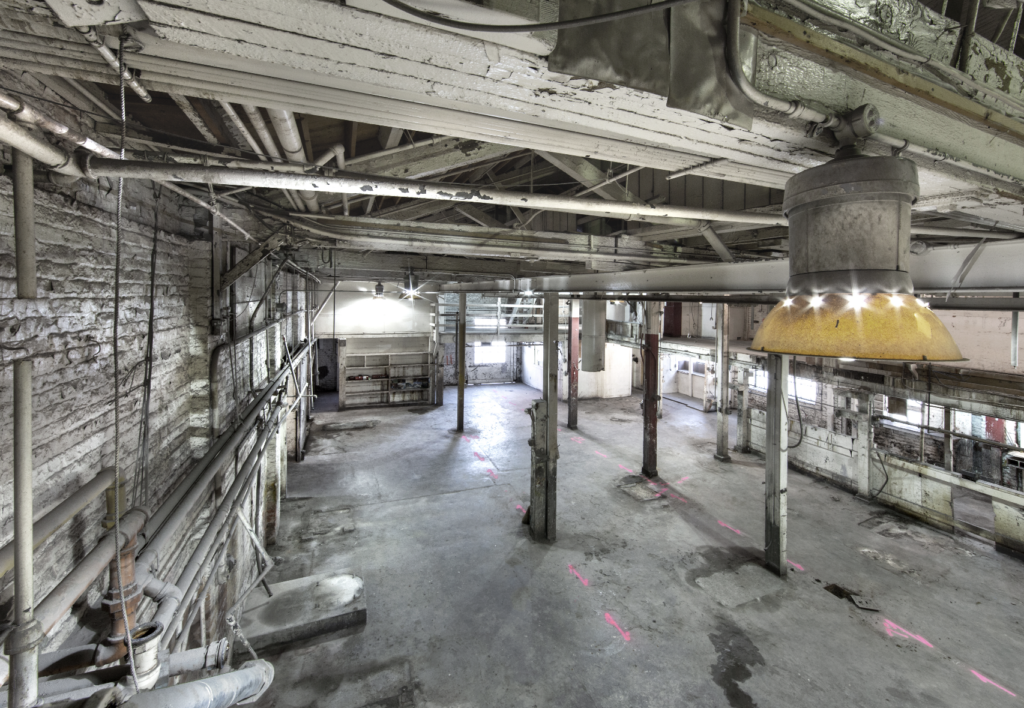1st Place, Adaptive Reuse, Low-rise
San Francisco’s Showplace Square Historic District is a former manufacturing and warehouse neighborhood that has seen many changes through the years. Today, the district has less of an emphasis on manufacturing and more on architectural product showrooms and offices for new-age tech companies. Exposed brick and timber structures with large windows make these high-design and -tech companies feel right at home.
The history of the buildings in the area date to the 1906 earthquake and subsequent fire
and devastation, which left entire areas of San Francisco available for redevelopment. Building
D was constructed by the R.N. Nason Company and had been used since the mid-20th century to manufacture lacquer and paint by the McGlennon Lacquer Company, affectionately referred to as MacLac.
Building D remained in operation up until the sale of the property in 2020 to Comstock Realty Partners, which closed on the building the same week San Francisco began to shut down because of COVID-19. Comstock Realty Partners enlisted the help of Marcy Wong Donn Logan (MWDL) Architects early in the consideration of the purchase of the property to perform initial studies and prepare renderings to imagine what the space could become.
Peter Logan, principal with Peter Logan Architecture + Design, design collaborator with MWDL on the project, described the building as it existed as a “rat maze” of partitions and rooms with two mezzanines and very low head heights.
“Building D is a condensed part of a larger campus of redevelopment, comprising separate structures that were built at different times with different materials,” Logan says. “The overall project consists of roughly 100,000 square feet made up of three separate buildings; Building D was its own building and parcel. The development timeline was longer than anticipated—approximately two years—hampered by slowdowns due to COVID.”
SEISMIC RETROFITS
One of the most important aspects of the project was incorporating seismic upgrades and bringing all the lateral forces down to the foundation. However, many of the foundation’s original construction details were unknown and had to be determined during intrusive investigations. The surprises continued during interior demolition. “In some respects, we were designing as we went along,” recalls Kent Royle, principal architect with MWDL.
Moment-resisting frames around each of the existing pilasters were designed with perforated steel plates and thoughtfully incorporated into the design. “Something we discovered was that once the frames were installed and painted black, the perforated panel starts to visually disappear and it allows you to see the bricks beyond; it’s an interesting phenomenon,” Royle remarks.
GPLA Inc., the structural engineer for the project, allowed the mezzanine structure to hang from new trusses. GPLA accomplished this by removing the bottom chord of the old trusses and reinforcing the existing wood top chord with new steel angles, thus creating a new truss that visually appears very light and delicate. The hanging mezzanine is constructed of cross-laminated timber (CLT) with the structure exposed on the bottom surface and tongue and groove oak planks as the floor finish. The CLT structure created a very thin floor plate and maximized head space at ground level. By hanging the mezzanine from the trusses, the ground level is open and column-free.
HIDING THE GUTS
The building felt dark inside after the interior demolition, so the designers opted to cut a 60-foot-long skylight into the building to brighten the space. In addition, the architects turned to lighting designer Darrell Hawthorne, principal of Architecture and Light, to creatively light the space. “Darrell and his team were very creative with hiding lighting in the structure to accentuate the brick walls and new steel structure,” Royle notes.
The team also wanted to hide mechanical equipment. Heating and cooling units visually were concealed on a flat roofing area out of the line of sight. “We didn’t want to visually impede the space with ductwork, so we incorporated high-velocity air nozzles into the slatted ceiling that discharge air across the entire space,” Royle explains. “This gives us effective heating and cooling without a lot of visual clutter.”
AMAZING TRANSFORMATION
Trying to renovate an older historical building for modern-day uses and building codes is not without its challenges. “It’s a small building, but there are infinite complexities in renovating a historic building that requires extensive seismic retrofits,” Logan explains. “If we were designing a new high-rise, we could set all the parameters and make the structural grid perfect. We don’t have to work around anything on a clean site. Here, the grid isn’t perfect; the floor isn’t perfect; there are existing conditions that we didn’t discover until later in the process; there were no existing drawings to work with; the list goes on. This small building had many complexities that added time and money and couldn’t have been foreseen.”
Consequently, for Logan, one of the most gratifying aspects of the project was witnessing the transformation. “Being in this building in the beginning and seeing what it became has been amazing,” he says. “It was a Cinderella transformation. I really appreciate the current state much more knowing what we started with.”
The end use of MacLac Building D has not yet been determined. The building was rehabbed on speculation and, though it has no tenant, the project has been used for pop-up event space and may find its next life as a design showroom, gallery or possibly even workspace for a local tech company.
“Designing without a specific end-tenant in mind and making this space workable for many possible uses was challenging, particularly in connection with the other buildings that are a part of a larger project,” Logan asserts. “There are several ways we could have accomplished that, some of which would touch into the realm of tenant preference. There are things we couldn’t design with those limitations in mind.”
Whatever the end use will be, MacLac Building D is a beautiful and unique space that is sure to draw admirers for many years to come.
— James Graham, AIA, Graham Baba Architects, Metamorphosis Awards judge
“Excellent adaptation. Remarkable structural solution. Love the added usable square footage of the hanging mezzanine. Gorgeous project.”
PHOTOS: Billy Hustace Photography
Retrofit Team
METAMORPHOSIS AWARD WINNERS and ARCHITECTS: Marcy Wong Donn Logan Architects with Peter Logan Architecture + Design
LIGHTING DESIGNER: Architecture and Light, (415) 676-3999
STRUCTURAL ENGINEER: GPLA Inc.
ME ENGINEER: Bayside Mechanical Inc.
HISTORIC PRESERVATION CONSULTANT: Mark Hulbert Preservation Architecture
GENERAL CONTRACTOR AND TIMBER INSTALLER, FRAMER: RHC Construction
METAL FABRICATION: Solher Iron Inc.
STEEL FABRICATOR, DETAILER, ERECTOR: Emerald Steel Inc.
Materials
WOOD CEILING: 9Wood
WOOD FLOORING: Madera Wood Flooring
RIDGE SKYLIGHT: Velux
STOREFRONT: Arcadia Inc.
BRASS RESTROOM FIXTURES: The Splash Lab
LINEAR LED LIGHTING, SURFACE-MOUNT: Q-Tran Inc.
DOWNLIGHT AT MEZZANINE EDGE: HK Lighting
RESTROOM LAVATORY SINK: Cement Elegance
BASALT PENNY TILE: Complete Tile Collection
GUARD RAILS’ PERFORATED METAL: McNichols




